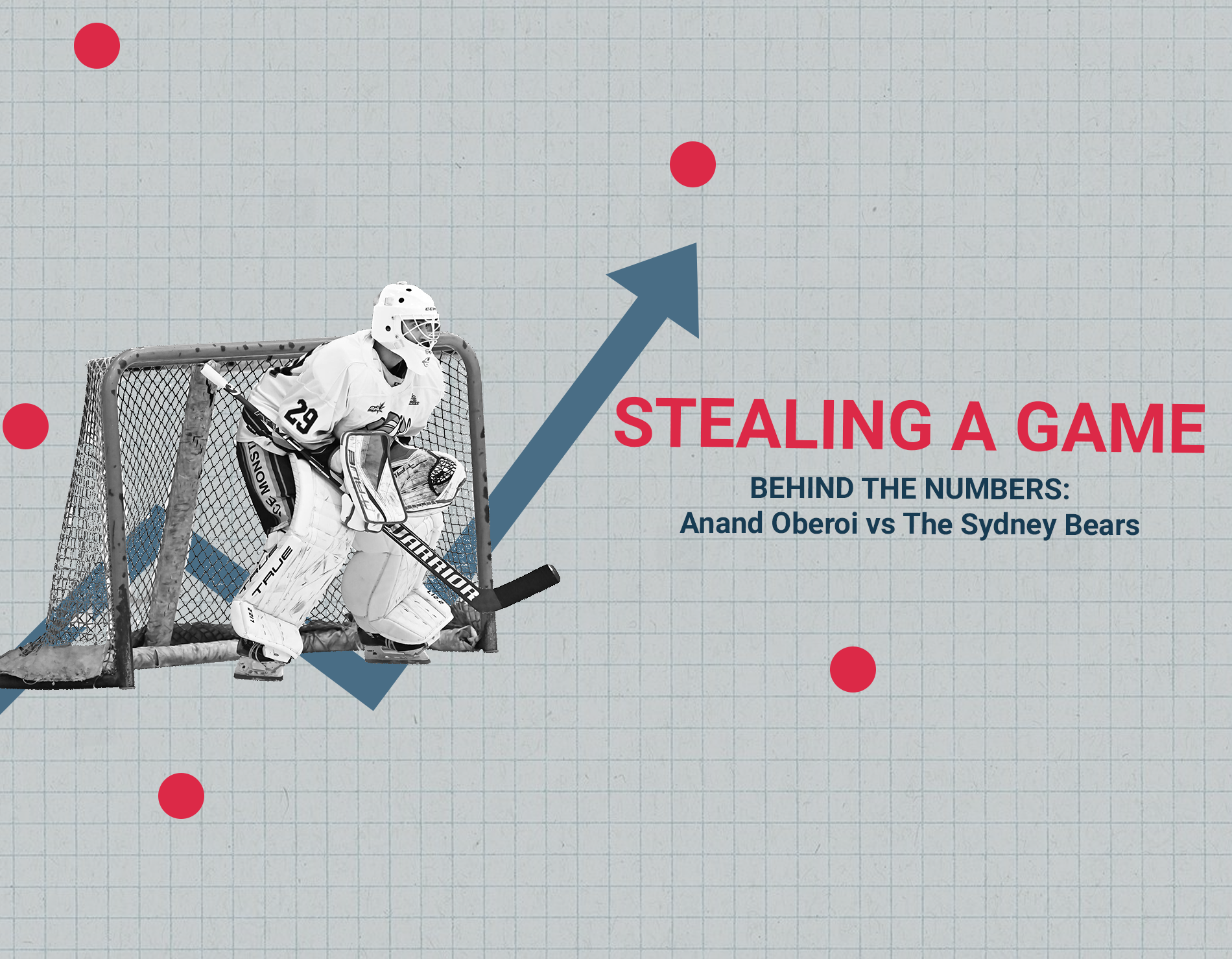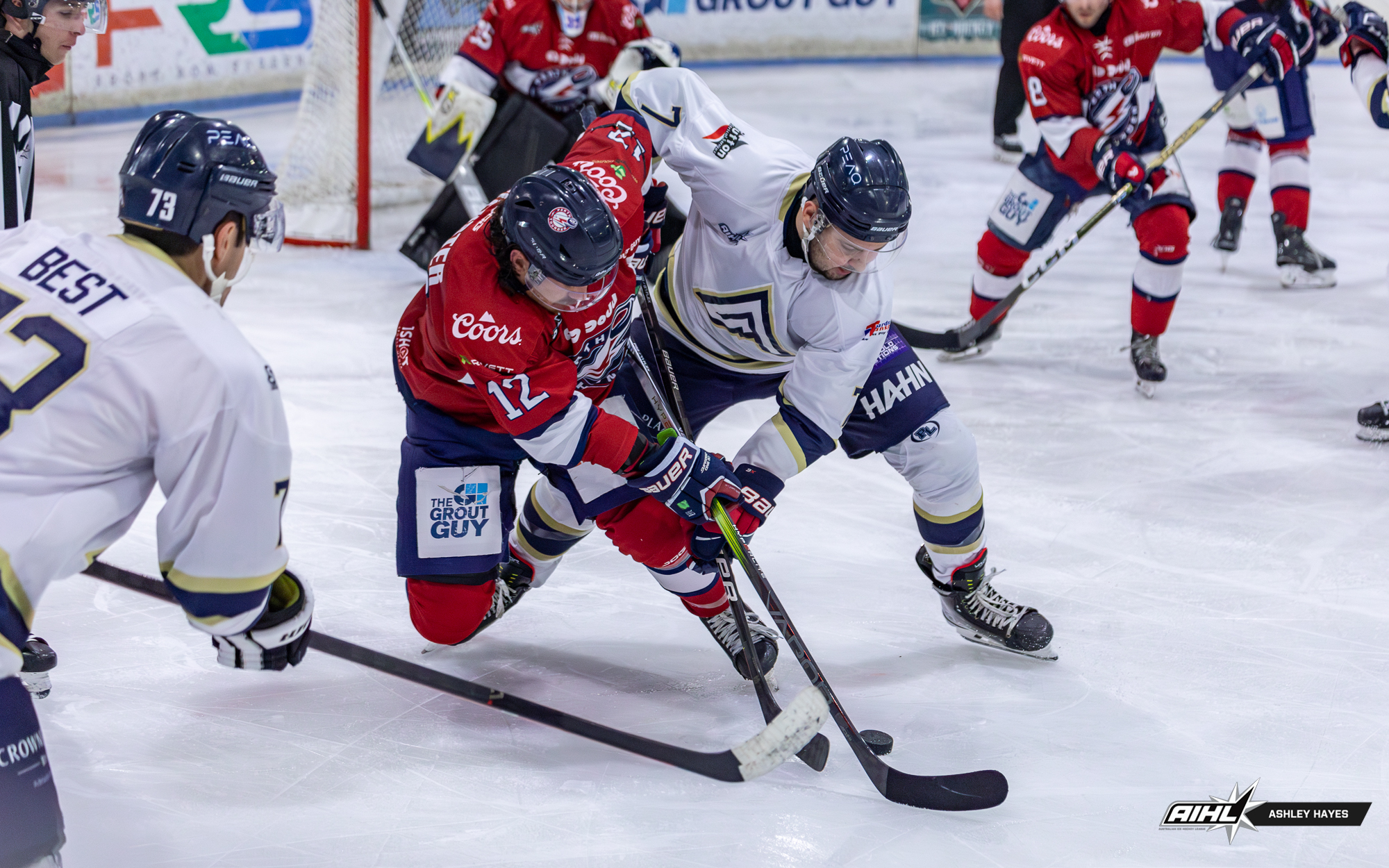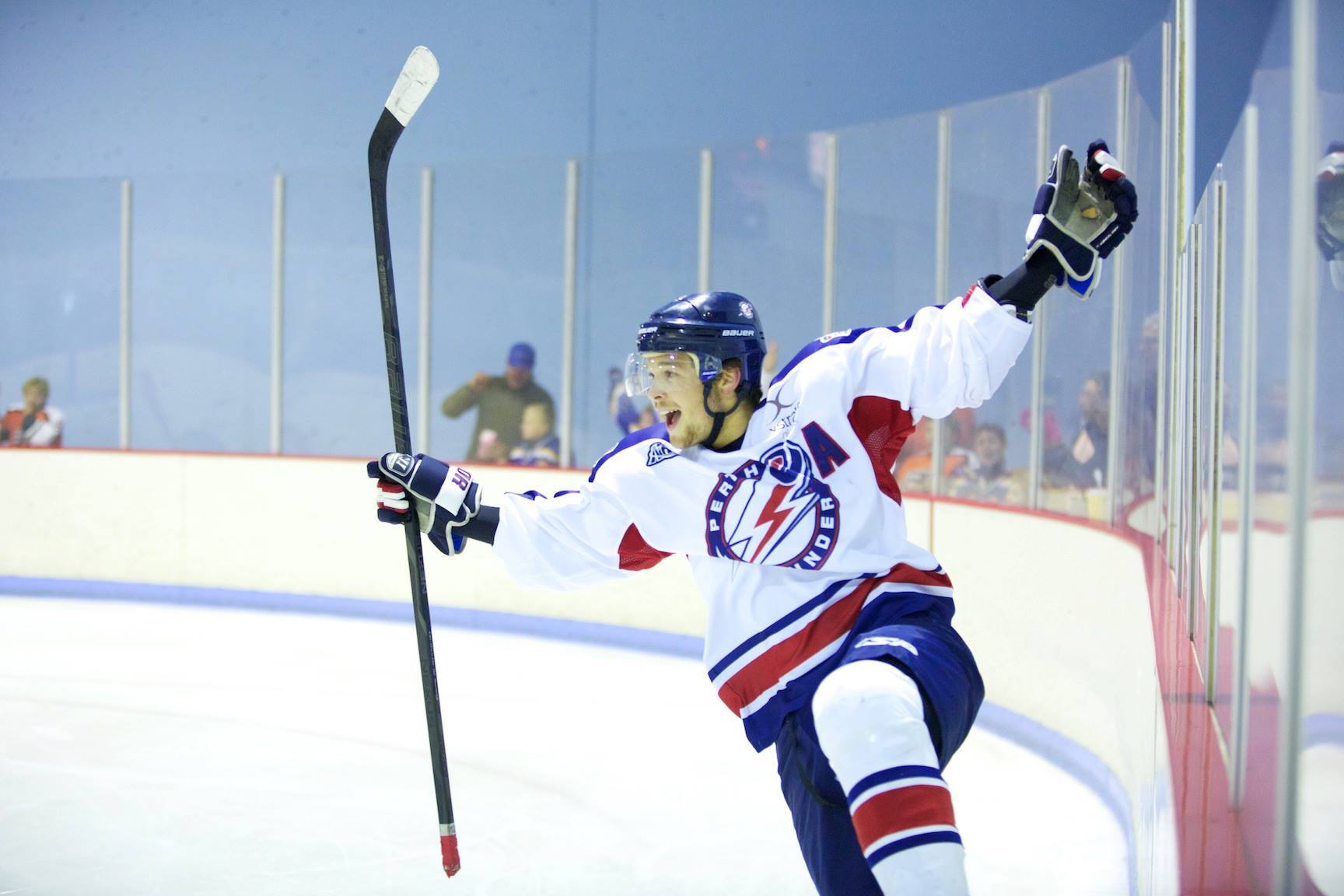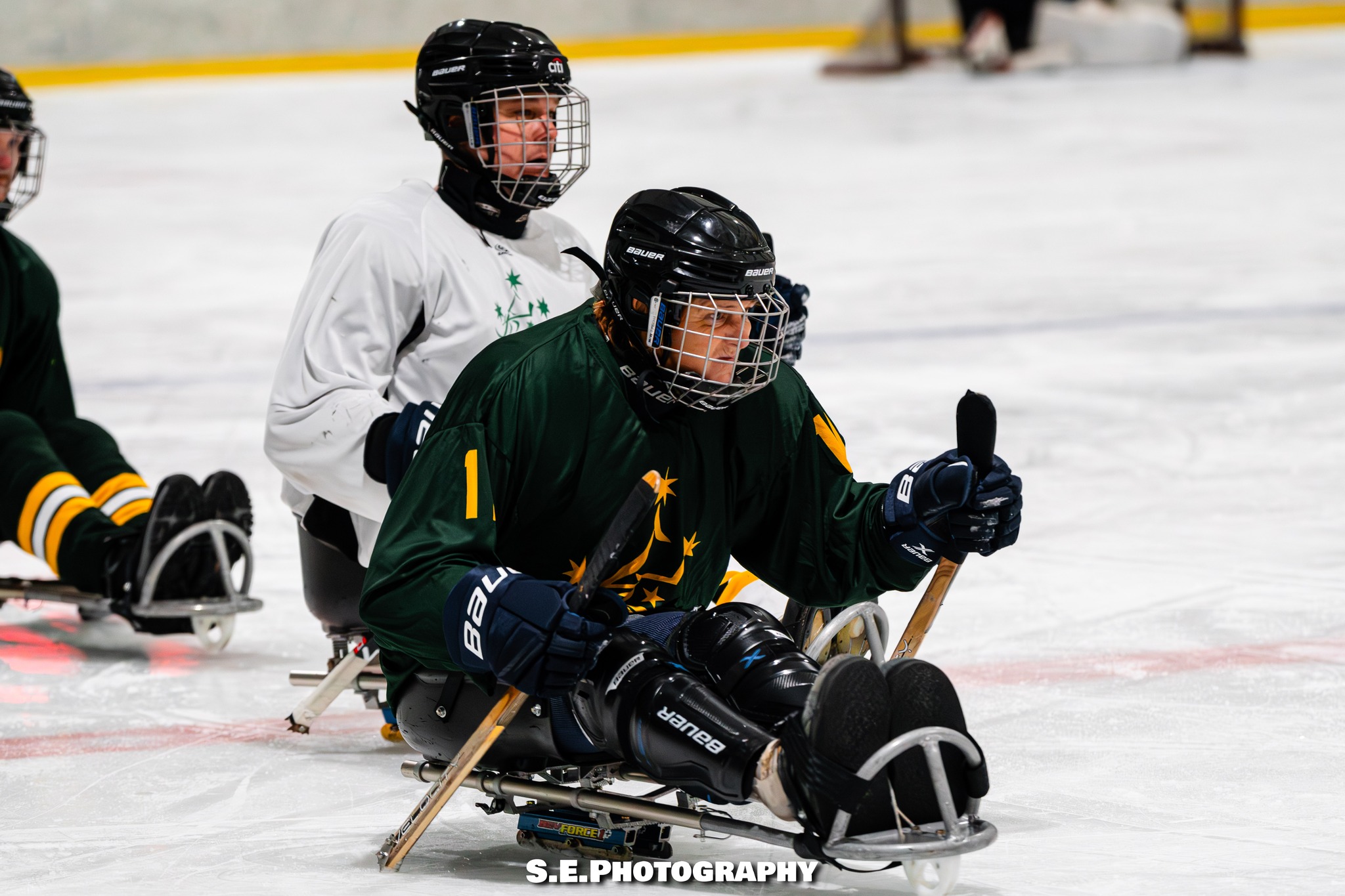The phrase ‘The Goaltender Stole the Game’ is perhaps over used, however it does perfectly describes last Saturday night’s matchup between the Sydney Bears and the Central Coast Rhinos at Macquarie Ice Rink.
If you haven’t watched it yet, stop reading and do it now because it was one of the most dominant goaltending performances I’ve witnessed in Australian Ice Hockey and 100% worth your viewing time.
To put it simply, Anand Oberoi put on a show for those in attendance on Saturday night with even those who where perhaps watching for the first time able to tell that this game was something special. In this article we will explore just how dominant his performance was as he nearly single-handedly led his team to their first win against the Bears since re-joining the league in 2023.
The box score itself is already impressive, 76 shots faced in regulation, a further three in OT, and a clean sheet in all three rounds of the shootout in what ended up being a 5-4 win for the Central Coast. However, throughout this article the aim is to take a deeper dive into the games statistics while also comparing it to historical AIHL performances, to decide if this was just a truly phenomenal game, or if it’s potentially one for the record books.
When we compare Oberoi’s performance to games by other goaltenders this season, it stands alone. Facing almost 80 shots in a game places it seemingly miles away from every other showing. The next closest performance was also by Oberoi, who faced 68 shots against the Perth Thunder on May 11th. The clear difference is that nine of those shots resulted in goals, while this weekend he held a surging Bears side to just four.

While this already looks like a rare feat in the AIHL, so far we have only compared it to games from this season. The true rarity of this performance becomes clear when we look at over 20 years of league goaltending data, dating back to 2004.
Out of nearly 4000 goaltending performances since then, Oberoi holds the record for both the most shots faced and the most saves made in a single game. The next closest was Dayne Davis’ performance on August 8th, 2015, against the Adelaide Adrenaline, where he faced 69 shots, stopping 66 of them*.
*I would like to point out that this is when games used to only be 50 minutes, and if we calculate that out to the 65 minutes that Oberoi played it would leave Davis with an era adjusted shots faced of 89, technically besting Oberoi’s record setting count. However it remains just that, a technicality.

If we consider this game as the record (which I do), we should delve into the number 76 a little more to investigate under what circumstances those shots occurred, what the state of the game was, and where they came from.
Firstly, to comprehend how much traffic Oberoi faced, we want to look at the volume of shots per minute. According to AIHL data, the average volume of shots in a game is about 40 shots on goal per 60 minutes. This is slightly above the NHL average but below the NHL shot attempts average of 55 shot attempts per hour.
During the game, Oberoi’s shot flow only dropped below that marker twice, showing he faced an above-average number of shots for about 90% of the game. In the third period, the shot pressure was almost double the league average, resulting in the Bears scoring 3 goals to send the game to OT.

The next variable to consider is the strength state. The Rhinos spent much of the third period in the penalty box. This allowed the Bears to spend huge amounts of time peppering Oberoi with power play shots as they desperately tried to even the score.
In the first and second periods, power play shots were slightly less frequent than even-strength shots, but that changed drastically in the third. With 11 minutes and 36 seconds of powerplay time, the Bears made the most of it with 26 power play shots compared to just 6 shots at even strength.
Oberoi somehow managed to maintain a 92% save percentage on the power play against this continuous stream of shot pressure.

However, not all shots are created equal. While 79 is an incomprehensible number, we will break down where they came from and their danger levels. Of the 76 shots, 20 were from inside the inner crease, 18 from the outer crease, and the remaining 38 from various locations around the offensive zone. Half of those were from Kadlec, likely with slapshots on the power play.

To put it quite simply despite my best efforts, this game is difficult to analyse and almost impossible to quantify. Oberoi’s performance was nothing short of seemingly insane. Each period’s shot chart looks like it could represent an entire game’s worth of shots, which is not an exaggeration considering Central Coast only put up 20 shots across all periods.

This game epitomises a goalie standing on their head or stealing the game. Call it what you want, Oberoi is the reason Central Coast won, and he did it in record-breaking fashion. Anand Oberoi more than deserves his flower for this game, because if history tells us anything, we won’t see another goaltending performance like this for at least a decade.




2 responses to “Behind the Numbers : Anand Oberoi vs The Sydney Bears”
[…] Behind the Numbers: Anand Oberoi vs The Sydney Bears by Alyssa Longmuir (Hockey Hype Australia, 12 July 2024) […]
[…] the Canberra Brave (3), Adelaide Adrenaline (3), and Central Coast Rhinos (2). Although it did take arguably the greatest goaltending performance of the past two decades in one of those […]